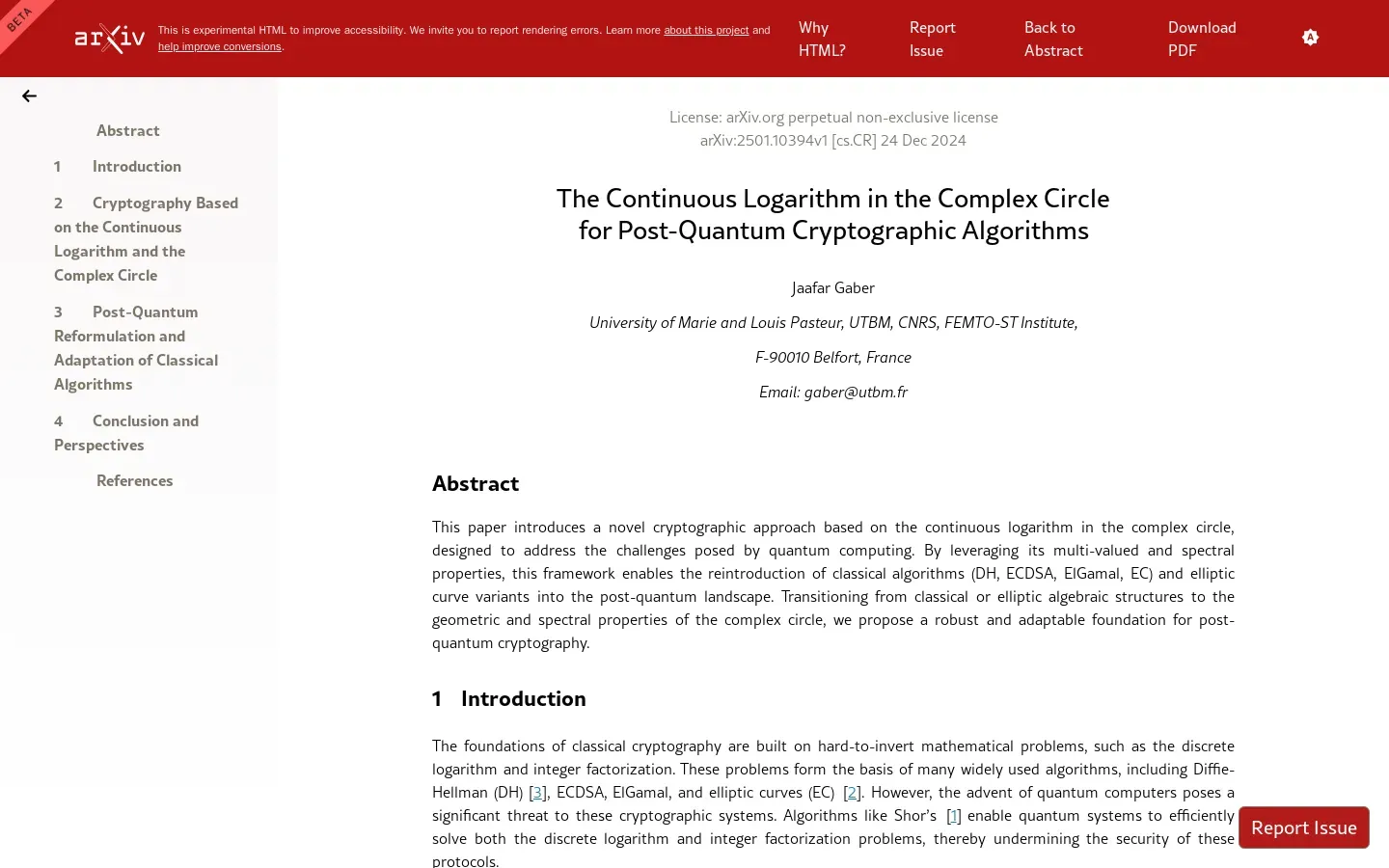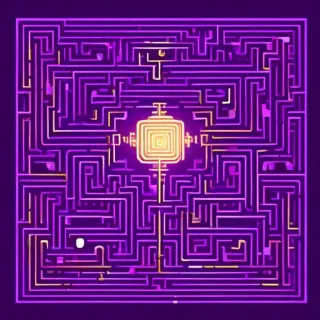
Advancements in Post-Quantum Cryptography and Continuous Logarithm
/ 4 min read
Quick take - Recent research has made significant advancements in cryptography, particularly in homomorphic encryption and post-quantum cryptographic standards, aiming to enhance security for cloud computing and address vulnerabilities posed by quantum computing.
Fast Facts
- Recent advancements in homomorphic encryption (HE) and post-quantum cryptography aim to enhance security in cloud computing against quantum threats.
- The research reformulates classical algorithms, improving the efficiency and effectiveness of cryptographic operations using the continuous logarithm within the complex circle.
- Hybrid cryptographic systems are explored, integrating traditional techniques with quantum-resistant methodologies to address risks posed by advancing quantum computing.
- Quantum Key Distribution (QKD) enhancements are utilized to secure key exchanges, while a new geometric framework provides deeper insights into cryptographic properties.
- The study emphasizes the need for continuous improvement in QKD protocols and the integration of advancements into secure communication protocols for broader application.
In the rapidly evolving landscape of cybersecurity, where the stakes are higher than ever, researchers are continually striving to stay ahead of threats. Among the most promising advancements is the exploration of homomorphic encryption, a technique that holds great potential for cloud computing. This encryption method allows computations to be performed on encrypted data without needing to decrypt it first, thereby enhancing security while maintaining functionality. As businesses increasingly migrate to cloud services, ensuring that sensitive data remains protected during processing has become paramount.
Yet, the journey toward robust homomorphic encryption is not without its challenges. The reformulation of classical algorithms plays a crucial role in overcoming the complexities and ambiguities associated with cryptographic operations. By reimagining traditional approaches through innovative mathematical techniques, researchers can optimize these algorithms for better performance and security. This continual refinement process is essential for crafting effective solutions in an environment where cyber threats are constantly adapting.
As we delve deeper into the realm of cryptography, the analysis of cryptographic properties becomes a focal point for researchers. Understanding how different algorithms behave under various conditions allows for more informed decisions about their implementation in secure systems. This kind of analysis provides a foundation upon which hybrid cryptographic systems can be built. These systems combine multiple cryptographic techniques to leverage their strengths while mitigating vulnerabilities. Such versatility could prove invaluable as organizations seek comprehensive security strategies that can withstand both classical and quantum attacks.
The rise of quantum computing has introduced a new layer of complexity to the cybersecurity landscape, necessitating enhanced methods such as quantum key distribution (QKD). Recent enhancements in QKD promise improved security against quantum attacks by utilizing principles from quantum mechanics to create unbreakable keys. This advancement not only reinforces current security measures but also underscores the need for continued innovation in post-quantum cryptographic standards.
At the core of these developments lies the mathematical foundation established through techniques like the continuous logarithm in the complex circle. This approach provides a unique perspective on constructing cryptographic algorithms that can potentially resist future quantum threats. By integrating these concepts into secure communication protocols, researchers are paving the way for a new era in which data transmission can occur with unprecedented levels of security.
The exploration of roots of unity within this mathematical framework further enriches our understanding of cryptographic properties. Through this lens, researchers can examine how various mathematical constructs interact with one another, leading to insights that could shape future cryptographic practices. The geometric framework emerging from this research serves as an additional tool for visualizing and analyzing cryptographic processes, making it easier to identify weaknesses and areas for improvement.
As we reflect on these findings, it is clear that they not only provide immediate enhancements to post-quantum cryptographic practices but also lay the groundwork for ongoing innovation in cybersecurity. The implications are profound; as organizations adopt these advanced techniques, they can bolster their defenses against increasingly sophisticated cyber threats. While challenges remain—particularly in balancing performance with security—the collective efforts of researchers and practitioners hold promise for a future where our digital landscapes are fortified against both known and emerging risks. The road ahead will undoubtedly demand creativity and collaboration, but with each breakthrough, we move closer to achieving a more secure cyberspace for all.



